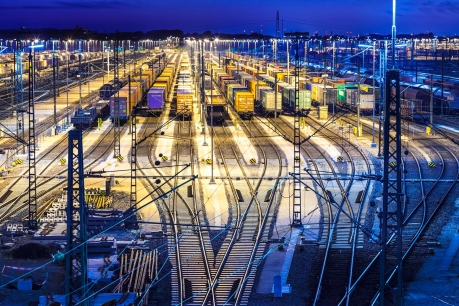DATE
May 2017
Railway level-crossing risk model
Developing the world’s leading level-crossing risk model to target optimized investments and secure reliable rail operations

Challenge
Level crossings represent a key risk to a railway, as they are an interface between the public, in road vehicles or on foot, and train services.
Controlling risks at this critical interface is a strategically important business issue since collisions can cause significant harm to road and rail users, and the very existence of crossings can limit the operational capability of the railway.
Investment in reducing risk at level crossings is a significant cost.
With single upgrades often exceeding £1M, strategic programs of investment to reduce risk must be targeted to have maximum impact in order to reduce the risk profile and secure reliable rail operations.
Approach
We have worked with national mainline rail structure managers for three decades, developing powerful risk-based approaches to categorize crossings by risk, identifying those which are the best candidates for upgrades.
This work has led to us developing the All Level Crossings Risk Model for the Great Britain rail network, which has been deployed to assess risk and target investment at ca. 7,000 level crossings in Britain for over a decade.
Value
The developed model is embedded within business processes, and represents state-of-the-art risk modeling, encompassing the latest research on risk factors and human factors, and containing powerful algorithms to determine levels of risk.
Railway level-crossing risk model
Developing the world’s leading level-crossing risk model to target optimized investments and secure reliable rail operations

DATE
May 2017

Challenge
Level crossings represent a key risk to a railway, as they are an interface between the public, in road vehicles or on foot, and train services.
Controlling risks at this critical interface is a strategically important business issue since collisions can cause significant harm to road and rail users, and the very existence of crossings can limit the operational capability of the railway.
Investment in reducing risk at level crossings is a significant cost.
With single upgrades often exceeding £1M, strategic programs of investment to reduce risk must be targeted to have maximum impact in order to reduce the risk profile and secure reliable rail operations.
Approach
We have worked with national mainline rail structure managers for three decades, developing powerful risk-based approaches to categorize crossings by risk, identifying those which are the best candidates for upgrades.
This work has led to us developing the All Level Crossings Risk Model for the Great Britain rail network, which has been deployed to assess risk and target investment at ca. 7,000 level crossings in Britain for over a decade.
Value
The developed model is embedded within business processes, and represents state-of-the-art risk modeling, encompassing the latest research on risk factors and human factors, and containing powerful algorithms to determine levels of risk.
